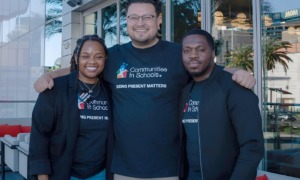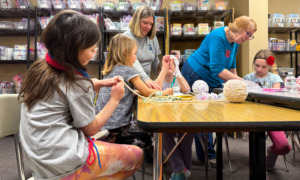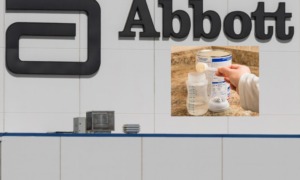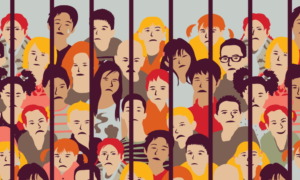This story was originally published by ProPublica.
Three young academics in Alabama are examining these mostly white private schools through the lenses of economics, education and history to better understand the persistent division of schools in the South.
One young researcher from Alabama is unearthing the origin stories of schools known as “segregation academies” to understand how that history fosters racial divisions today.
Another is measuring how much these private schools — which opened across the Deep South to facilitate white flight after the 1954 Brown v. Board of Education ruling — continue to drain public school enrollment.
And a third is examining how these academies, operating in a “landscape marred by historical racial tensions,” receive public money through Alabama’s voucher-style private school tuition grants.
All three researchers are white women raised in Alabama, close in age, who grew up near these academies. The women — one recently received a doctorate and the other two are working on theirs — approach their research from the varied disciplines of economics, education and history. Their inquiries are probing the very schools some of their family and friends attended.
In an ongoing series this year, ProPublica is examining the continued effects of hundreds of segregation academies still operating in the South. One of the three researchers played a key role in our initial story. Her experiences, both personally and academically, provided essential context to understanding how one segregation academy in rural Alabama has kept an entire community separated by race.
The research conducted by all three women is especially important now.
It comes at a time when Southern legislatures are creating and expanding school-voucher-style programs that will pour hundreds of millions of public dollars into the coffers of private schools, including segregation academies, over the coming years.
Segregation academies and voucher programs
Annah Rogers was working on her undergraduate degree at Auburn University in 2013 when Republican lawmakers suddenly rushed to pass the Alabama Accountability Act. The legislation created a voucher-style system to pay private school tuition for low-income students. As Rogers followed the debates, she wondered just how accessible private schools are to families with few resources, especially in rural areas. She knew that some of those communities don’t have private schools — and where they do exist, they’re often segregation academies.
Rogers hails from Eutaw, Alabama, a town of 3,000 people located in the Black Belt, a stretch of counties whose dark, rich soil once fueled large cotton plantations. Her parents sent her 45 minutes away to a private Catholic school. (Catholic schools generally aren’t considered segregation academies because most dioceses integrated willingly.) Rogers’ father attended a now-defunct local segregation academy, and her mother went to one in another county.
While working on her doctorate in political science at the University of Alabama, she devoted her 2022 dissertation to examining the state’s voucher-style program and its effects on private schools, including segregation academies. She had expected segregation academies to balk at participating in the program given that more than 60% of students who use it are Black. Yet she found that many do. In fact, they take part at a slightly higher rate — 8% more often — than other private schools.
That discovery prompted more questions: Are the tuition grants enabling Black students to attend segregation academies, making the schools more diverse? Or are the academies merely siphoning off the white students who use the grants?
“The biggest problem is that we don’t know,” said Rogers, who’s now an assistant professor at the University of West Alabama’s education college.
She hit a huge hurdle when the state refused to break down by school the demographics of students who use the publicly funded program to pay private school tuition.
Despite that roadblock, she continues to probe these questions while working on related studies, including one that demonstrates how school segregation patterns have continued and even worsened across Alabama’s Black Belt over the last three decades.
Her research will become more critical in the coming years, as more students, including students from wealthier families, will be receiving state money to attend private schools. In March, Alabama lawmakers created a universal voucher-style program to fund private school tuition. It will be open to all children, regardless of household income, starting in 2027.
Segregation academies and public school enrollment
Danielle Graves grew up in Mobile on the Gulf Coast, where she attended a mostly white private Episcopal school. Although it opened long enough before the Brown v. Board ruling that academics don’t label it a segregation academy, its enrollment still grew substantially during desegregation.
Graves left the South to pursue her master’s and doctorate in economics at Boston University, where she is a fourth-year Ph.D. student. While in the Northeast, she realized that private schools there tend to be much older than in the South. The private school tradition didn’t really catch on in the South until white people thought Black students might arrive at their children’s public schools.
Graves also realized how few people outside of the South knew about segregation academies. Economics literature rarely mentioned them at all.
“I felt like it was this missing piece,” she said.
A lot of economic research on school desegregation and white flight focuses on cities rather than on rural areas “where segregation academies really play a big role,” Graves said. She jumped into that largely empty research lane.
Graves tackles questions like: How have segregation academies affected the average public school enrollment? Are there differences between rural and urban areas?
She taught a class on the economics and history of school segregation at Harvard University this spring and has spent the last two years researching and presenting her work on the impact that segregation academies have on local public schools.
For the dissertation she is finishing, Graves found that on average, when segregation academies opened in Alabama and Louisiana, they caused white enrollment in neighboring public schools to drop by about a third — and the white population did not return over the 15 years that followed.
Now she is measuring the effects of segregation academies on local public school funding, the students who attended them and the communities where they operate.
Segregation academies and history
Unlike the other two researchers, Amberly Sheffield went to her local public schools, which were predominantly Black. As she watched other white families pay to send their children to segregation academies, she wondered: why?
Sheffield grew up in Grove Hill, a town of 2,000 people, where her father briefly attended a local segregation academy. After earning her undergraduate degree, she landed a job teaching history at a segregation academy in neighboring Wilcox County. ProPublica’s first story in its series on these academies focused on Wilcox County and the lasting effect that school segregation has had on community members — including, for a time, Sheffield.
Almost all of her students at Wilcox Academy were white. The entire faculty was white. Yet Wilcox County is 70% Black.
Like most segregation academies, Wilcox Academy doesn’t advertise itself as such. Some of these schools include their founding years on their websites or entrance signs — as Wilcox Academy does — but mention nothing about the fact that they opened to avoid desegregation.
Sheffield wanted to shed light on the context of the schools’ openings. In her 2022 master’s thesis at Auburn University, she chronicled Wilcox County’s history of sharecropping, violence against civil rights advocates, and resistance to school integration.
She also documented the many fundraisers white people held to pay for the segregation academies they rushed to open before many Black students arrived at the white public schools. Families forming one academy held a skit night, barbeque, fish fry, bingo party, pet show and pancake supper. The money raised paid for school equipment and salaries “but equally important, it created a new community for its founders, sponsors, and families,” she wrote.
The schools also joined a new group that provided their accreditation and organized sports events.
“These academies allowed whites to gain complete control over their children’s education — they no longer had to answer to any form of government but their own,” Sheffield wrote.
Today, she is continuing her research as a doctoral student in history at the University of Mississippi.
“History is very important in understanding how we’ve gotten to where we are today, especially when you look at public schools in rural communities in Alabama,” Sheffield said. Many of these schools are mostly Black, underfunded and struggling. “I want people to understand how it got that way, and the answer usually is segregation academies.”
***
Jennifer Berry Hawes is a South Carolina-based reporter with ProPublica’s South hub who focuses on criminal justice, religion, race and the welfare of women and children. Prior to ProPublica, Hawes worked at The Post and Courier in Charleston, South Carolina, most recently as a watchdog and public service reporter. She was part of the team that won the 2015 Pulitzer Prize for public service for the series “Till Death Do Us Part,” which examined South Carolina’s failure to protect women from often-fatal domestic abuse. Hawes has written on topics ranging from persistent failures in public education to prison violence to racial injustice.
Mollie Simon contributed research. Simon is a research reporter at ProPublica. She previously worked as a researcher for LegiStorm and as a reporter for the Anderson Independent-Mail and Greenville News in South Carolina.
ProPublica is a Pulitzer Prize-winning investigative newsroom. Sign up for their The Big Story newsletter.




























